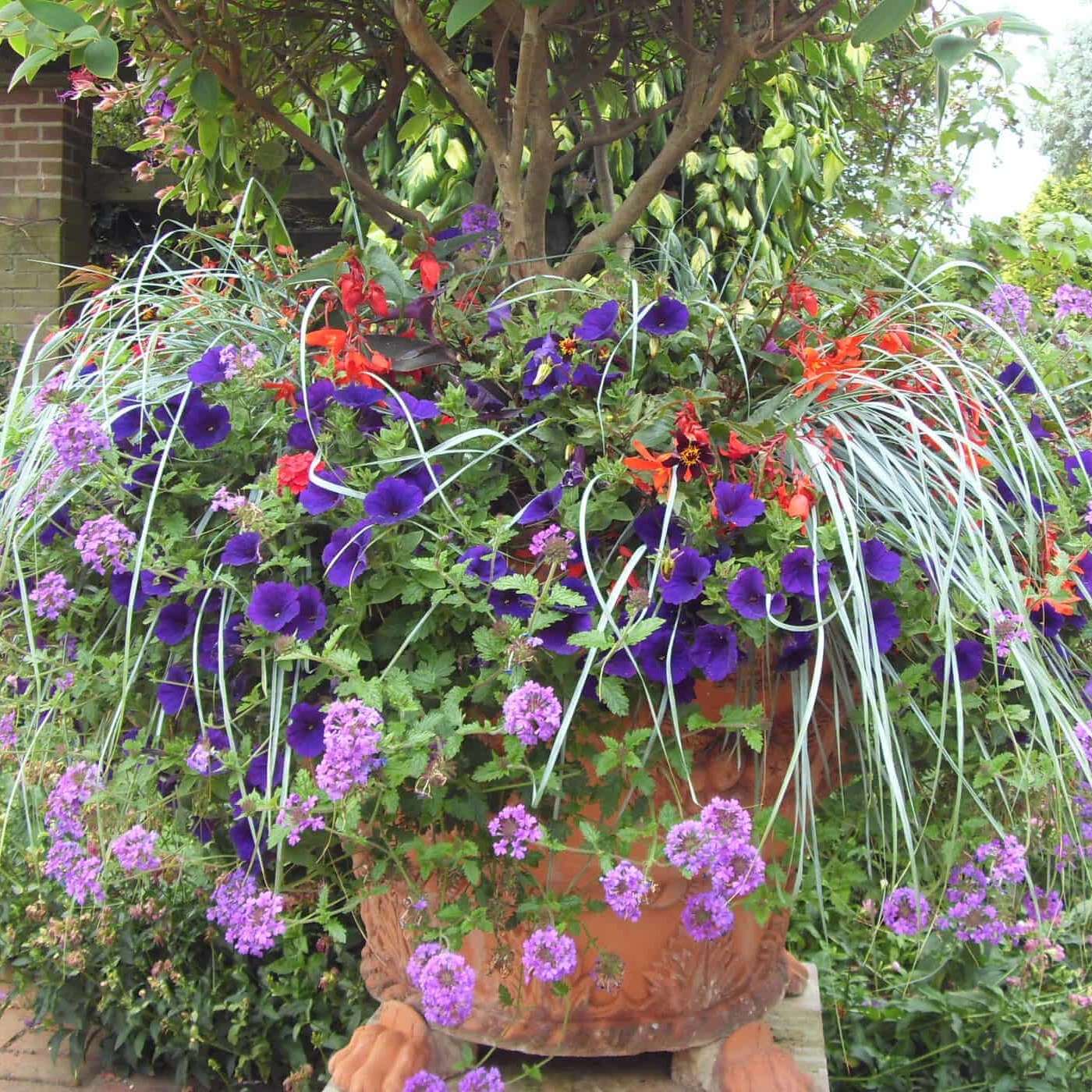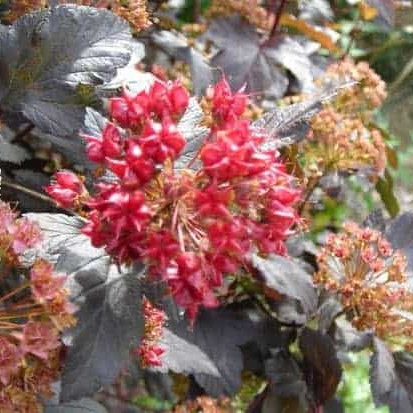As well as the usual culinary herbs there are many cultivated plants that can provide useful produce from your garden, known as edible ornamentals, and sit amongst the ornamental plants in your borders and also provide decorative interest in combination with other shrubs, trees and herbaceous perennials.
The traditional French ‘potager’ combines vegetables, herbs and flowering plants in an informal and decorative way but with a deliberate emphasis on growing food in attractive combinations.
If you don’t have the time or space to manage a full kitchen garden you can still select plants that will be useful in the kitchen but are low maintenance and blend into your borders.
Lonicera caerula (Honeyberry) This is actually a shrubby honeysuckle that makes a medium sized shrub, flowering in late winter to early spring, the flowers are followed by vivid purple fruit that can be eaten raw or made into jellies and jams and are considered to be as tasty as blueberries and high in vitamin C and antioxidants. They originate from Northern china and Japan where they have been harvested in the wild for centuries. Make sure that you have the correct species as some honeysuckle berries are toxic. Growing them in a rich soil in full sun will give best results.
Berberis sp (Barberry) There are many Berberis species that can be grown for the berries, Berberis vulgaris is traditionally harvested and used in Persian and Middle Eastern cooking to flavour rice and rich spicy stews, it has a piquant flavour and is rich in vitamin c and can be bought from specialist food shops in its dried form but why not pick and dry them yourself, you can use most cultivated varieties, pick them in the autumn when fully ripe – you just need to take a little care as the plants are very thorny.
Cynara scolymus (Globe artichoke) this striking herbaceous perennial with deeply divided large silver foliage is easy to grow in a sunny spot in a herbaceous border for structure, colour and the edible flower buds. Widely cultivated throughout Europe from the middle ages the delicate flavour of the base of the petals and from the ‘heart’ is a bit fiddly to get to but well worth the effort. Modern cultivars such as ‘Violet Globe’ have a purple tint to the flower bud which adds additional interest. If you leave some of the flowers to open you get a spectacular display from the flowers and subsequent seed heads.
Mespilus germanica (Medlar) Regaining popularity another plant used widely in medieval times, the medlar. These fat little fruits that look like a cross between a rosehip and a crab apple should be left to ‘blet’ (go almost rotten) they can then be used in jellies, medlar cheese and fruit cakes or eaten raw with a glass of port and some stilton cheese. They have a taste of chutney at this stage. The tree bears large handsome blossom in Spring and has a rounded crown and is most suitable for small to medium sized gardens.
Caroline Wright
Caroline brings decades of horticultural experience, both practical and theoretical. Having lectured at Brackenhurst Horticultural University for many years, Caroline has now relocated to France and is following her passion for growing plants and teaching. Caroline and her husband Paul run the plant nursery, propagating all of the plants themselves and lead a wide selection of fun and interactive horticultural and craft based courses.



